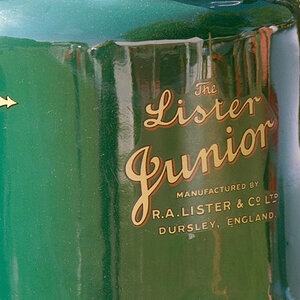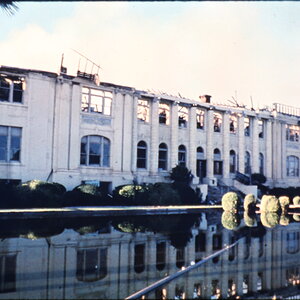lordfly
TPF Noob!
- Joined
- Feb 1, 2010
- Messages
- 114
- Reaction score
- 0
- Location
- Monroe, Michigan
- Website
- www.flickr.com
- Can others edit my Photos
- Photos OK to edit
I don't print out many photos, I'll admit; I'm more of a digital guy. My house is already filled with painting and artwork, it's not like I'm able to cram any more frames anywhere.
While perusing a Professional Photographer's magazine, I saw a lot of ads for professional photo printing, and it got me thinking: what, exactly, is the qualitative difference between a "professional" print made by some lab you send away for (obstinately for clients), and the same prints being shot out of a Walmart? Our local Walmart has a Fujifilm dry lab (a DL410, yes, I'm that nosy and that big of a dork), and from what I could tell the prints looked really good. Are "professional" prints sent off to a top lab really any different?
I'm just wondering; if I ever to decide to get into photography as a side business, it would be nice to be able to explain to clients what the difference is between getting them printed at Wallyworld or Costco compared to having me get them printed for them from some superduper lab.
While perusing a Professional Photographer's magazine, I saw a lot of ads for professional photo printing, and it got me thinking: what, exactly, is the qualitative difference between a "professional" print made by some lab you send away for (obstinately for clients), and the same prints being shot out of a Walmart? Our local Walmart has a Fujifilm dry lab (a DL410, yes, I'm that nosy and that big of a dork), and from what I could tell the prints looked really good. Are "professional" prints sent off to a top lab really any different?
I'm just wondering; if I ever to decide to get into photography as a side business, it would be nice to be able to explain to clients what the difference is between getting them printed at Wallyworld or Costco compared to having me get them printed for them from some superduper lab.



![[No title]](/data/xfmg/thumbnail/30/30990-df3df397f705643bc2c207cc9d579d08.jpg?1619734554)


![[No title]](/data/xfmg/thumbnail/39/39291-a89dc472765e04f66f617dd9acc8030d.jpg?1619738958)
![[No title]](/data/xfmg/thumbnail/39/39295-230d6dc9ce62e92561457d4c8fb67dc6.jpg?1619738959)

![[No title]](/data/xfmg/thumbnail/31/31980-e5048a424621c7b3cd0d306d63c09d67.jpg?1619735137)



